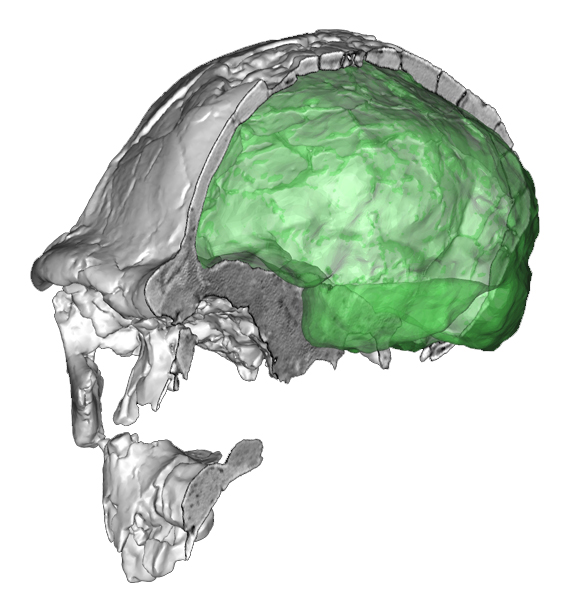We have just published a review on major changes in the field of paleoneurology during the last decades, taking as starting point a milestone paper by P.V. Tobias on the brain of Homo habilis, published back in 1987. This taxon, much debated in the last 20 years, has not found a proper taxonomic validation yet, which suggests at least a lack of robust evidence, in this sense. Nonetheless, the paper by Tobias is a good article to discuss recent advances in this discipline, according to current knowledge in brain evolutionary neuroanatomy. Many features that have been central in paleoneurology like brain size, frontal lobe morphology or brain asymmetries, although still relevant in neurobiology, have not provided influential information on the evolution of the human genus. At the same time, many endocranial traits are still poorly known for our own species, and can only allow general speculations, mostly when considering the scarce and fragmented fossil record. Importantly, the exponential social transformation of science in the last years requires important epistemological considerations. The attention of the mass media for science and research is prompting a compulsive marketing based on appearance and fast vending news, at the expense of content and quality. Paleontological fields are characterized by issues that can be hardly proven, charming topics, and harmless conclusions (in the sense that they have no direct consequences on people’s welfare). These three features make these fields more sensitive to contamination associated with personal, institutional, and economic interests, generating a conflict between scientific proficiency and public visibility. Excessive speculations, in this sense, can seriously harm the reputation of the discipline.
The social implications, however, do not only deal with marketing issues but also with moral constraints associated with the excesses and fears of any historical time. Science is supposed to be free from censorship and social pressure, but it has never been so, and neither is now. Our perspective article was, paradoxically, a good example of some of these constraints criticized in the paper itself. As a sort of review of the field, since its earliest version, the manuscript did include the photographs of two of the founders of the discipline, namely Phillip Tobias (as mentioned, the review is based on one of his papers) and Ralph Holloway (as the main promoter of the “science of endocasting”). After one year of preparation, three resubmissions, and the revision performed by four referees, the publication was suddenly suspended during the proofs’ correction stage, because it included these two images of “white senior males”, which apparently goes against the defense of human diversity (race, age, and sex). When the Editors were informed of this situation, they circumvented the problem, saying that an informal and unwritten norm of the journal prevents the possibility of publishing photographs of persons, except for obituaries. A strange norm, which apparently undervalues the fact that science is done, inevitably, by persons. Anyway, because of their own implications in the previous review process, they accepted to publish one of the two figures, namely the one of Ralph, because it shows his amazing cast collections. The image of Tobias, kindly provided by Bernard Wood precisely for the preparation of this article, was dropped. To make a proper acknowledgment to both scholars, I publish this image here in this post (below – click to enlarge).
Science has always been influenced by social factors and, when science becomes more social, social factors become more pressing. Humans are not so good to deal with grayscales, and they usually shift from one excess to its opposite, from one abuse to another, from one emotional reaction to its other extreme. Racial and gender issues are a clear example: in a healthy society, these factors should have no importance at all in the management of human relationships, but they keep on representing a major filter and bias in our culture, even in science. Censorship is, at any time, subtly embedded in the behavior of a society. I really invite you to read this article: An Existential Threat to Doing Good Science.
Our review ends by asking what we should keep from 30 years of paleoneurology. More than fossils and techniques, what really matters is, after all, competence, expertise, experience, and commitment. These four values, apparently positive for the sake of a healthy science, were also criticized during the proofs’ correction (most of all the term “commitment”, which had to be substituted in the final version of the manuscript), because they were claimed of having a negative connotation, supporting “meritocracy”.
This paper has been published in an issue dedicated to the 50th anniversary of the Journal of Human Evolution.


